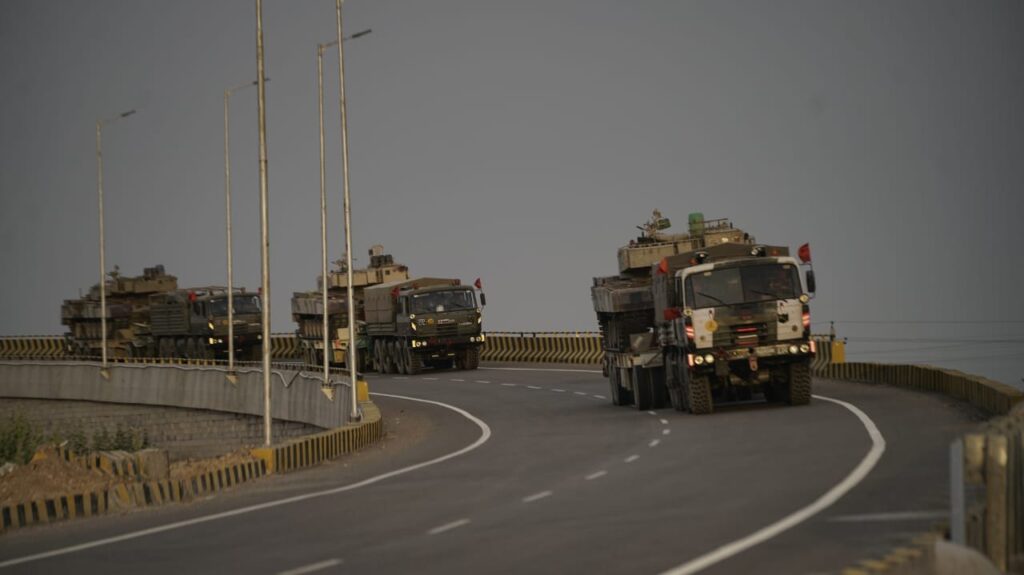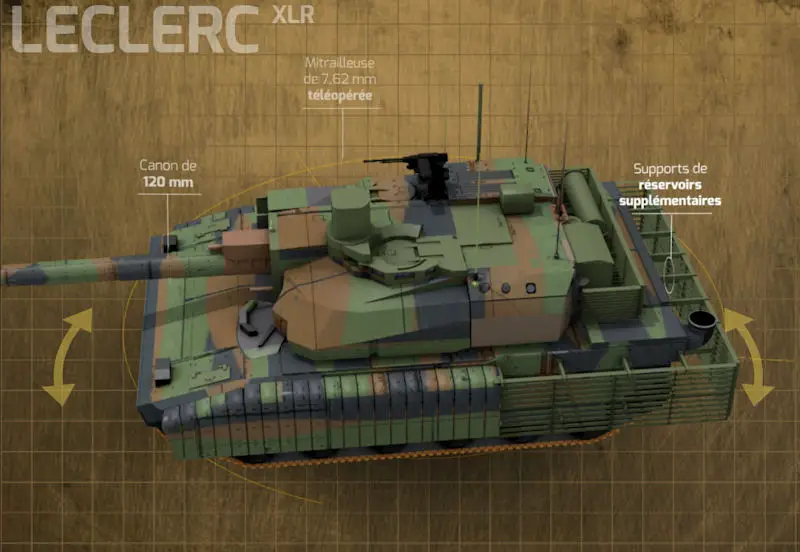India wants to buy 1,770 tanks under the Future Ready Combat Vehicle (FRCV) project and has optimistically launched Request for Information (RFI) in 2021 after aborting the first RFI. Equally optimistic, the Russians responded cheerfully with the T 14 ARMY (a variant specially dedicated to India). The Russian optimism is natural because practically the entire Indian tank fleet is Russian – T-72 and its variant built in India, and T-90 and the variant being manufactured in India. The Indian Arjun MBT does not deserve to be considered, as the Indian Army does not take it seriously.
So far, so good and normal, the Russians think they are victorious before the start, and they have reason to believe that. (Also Read – Russia offers to build a new Main Battle Tank based on the Armata platform under the Indian Army FRCV project)
But the trouble is knocking at the door because of the French. The Russian Galician colleagues from the mainland came to India with Rafale. Indians like Rafale as they liked the Jaguar or the Mirage over time.

Then the French sent Rafale M to oust MiG 29K, and most likely, the Indians will like it.
The French have gone even further, offering everything India wants – Barracuda nuclear submarines, aircraft engines (for helicopters and advanced training aircraft) and now the Tanks.
A French website claimed Nexter sent an e-mail to New Delhi with a question. Doesn’t the Indian government want to take a look at the sketches of the modernised Leclerc tank, also known as the Leclerc XLR ?!
The “XLR” is a modernisation program that French Leclerc tanks will complete by 2028. France is practically modernising its Leclerc fleet and kindly asking the Indians (the newest best friends of the French) if they are not interested?
There are about 200 tanks and 18 technical recovery vehicles on the Leclerc chassis in France. The modernisation costs 330 million euros, a very decent amount, but it is too costly for France.
Russia wins Indian Army Tank tenders because the Indian Army wants a tank with a maximum weight of around 50 tons. Also, the tanks must have very high mobility in rugged terrain. By mobility, we mean: the tank must be able to use a precarious unorganised infrastructure, to be able to use the bridges as they are, the tanks should be agile and be able to approach high slopes compared to the tonnage of the tank, etc.
Therefore, Russian tanks were more suitable for Indian requirements than Western tanks. The Russians have tanks with a maximum weight of around 45-50 tons, and the western ones are about 60 tons.
The Russian T-14 Army is a bit heavier, somewhere at 55 tons, which is precisely as much as the Leclerc, and here the paradigm is changing. Leclerc is more expensive than a T 90, but we do not know how it is compared to a T-14. Another problem is the complexity of Leclerc compared to a T-90. Switching from T-90 to Leclerc will be challenging.

T-14 is a different tank (than T-90), and as a consequence, no one knows how it will work, while the Leclerc program has gone through an evolution, including war, and has, as it turns out, enough experience to rely on it.
The French tank is manufactured by Nexter, has a 120mm and 52 calibre cannon, a 1500hp diesel engine, and is the only western tank with an automatic loading system. Leclerc has a three-man crew.
Upgrading to the XLR standard means adding a new modular armour package to both the tank and the turret, an automatic turret equipped with a machine gun, a new communications system, a new information system for combat, etc. Specifically, XLR aims to integrate a Combined Arms Battle Group [GTIA] SCORPION by equipping it with the Scorpion Combat Information System [SIC-S] and the CONTACT radio. The upgrades also include improving its protection against new threats, with jammers and a remotely operated turret and dealing with obsolescence, particularly at the level of its computers and its fire control.
It would be a stunning blow for the Russians to lose the tank market in India which includes tanks, spare parts, tank guns, tank projectiles, missiles launched on the barrel. To understand how severe the blow would be, India is the largest operator of T-90 tanks (+1000 T90S tanks), not Russia. So an important part of the Russian tank industry, components, ammunition, etc., works for India.
The Russian T’s have a rival in the Leclerc in terms of the weight. Paris will probably make a significant transfer of technology because, after 2030, the new Franco-German tank is expected to replace Leclerc. The deal will be probably equivalent to the sale of the Mangusta attack helicopter by the Italians to Turkey, given that Italy is already developing a new attack helicopter.
The French Perspective
The French want to relaunch the production of Leclerc given ‘high intensity’ future requirements. In 2016, it was reported that Saudi Arabia was considering ordering “several hundred” of Leclerc’s.
In Dec 2021, a question in French parliament referring to the Indian FRCV project, a parliamentarian had estimated that if Nexter won this contract, then it would be possible to “restore the assembly lines” of the Leclerc tank in France and India. It would make the “price of acquisition of this particularly competitive tank, both for the Indian and French armies and for export”.

And all the more so, the question adds, since France’s “short and medium material needs are at least 400 combat tanks in addition to Indian needs, all while pooling with India the cost of developing specialised versions in command, engineering, mobile artillery and anti-aircraft defense which the French Army needs and which it sorely lacks”.
Also, the Parliamentarian asked if it was a question of “initiating a discussion with India to launch a joint production of the AMX Leclerc combat tank and its derivatives” or the Euro Main Battle Tank, proposed by KNDS, the joint venture formed by Nexter and the German Krauss Maffei Wegmann.
Theoretically, the MP’s idea may seem appealing. But in practice, it’s a whole different story, as the Ministry of the Armed Forces pointed out in its response. If the parliamentarian recognises that the “strategic prospects” with India are “promising”, he also should know that the Indian procedures in terms of armament are “often long and complex”, to the point of taking several years.
In addition, the project to acquire 1770 “tanks of the future” is only at the request for information stage and it will be carried out under the “Strategic Partner” procedure, which the ministry explained, “implies an Indian holder for the contract, in principle private, and a transfer of technologies, which will ultimately lead to the production of the systems locally, in India”.
At the same time, India plans to start producing the tanks by 2030. It means that the process should be quicker. “With its partner KMW (Krauss Maffei Wegmann) within the KNDS group, Nexter analyses the possible solutions to meet Indian requirements and prepares the best response that KNDS can provide to this request. As soon as political support appears necessary, the Ministry of the Armed Forces, within the framework of our partnership with India, will support the industrial proposal in its steps and ensure any synergies that may exist between the needs of the Indian armies and our national needs,” replied the minister.
“Moreover, if we stick to the timetable of the FRCV program, the Franco-German combat tank of the future [MGCS – Main Ground Combat System] would be out of the game… given that it must materialise at the horizon of 2035 and that it involves a third actor, namely Rheinmetall. What’s more, this project is currently bogged down due to a lack of agreement between the manufacturers concerned,” he added to the reply on the MGCS project.
PS: India has sent RFI to the French and many tank manufacturers, and the intention is to acquire a future tank to go into production in the early 2030s. So, we are talking about intentions, groping, etc., nothing concrete in the near future.
